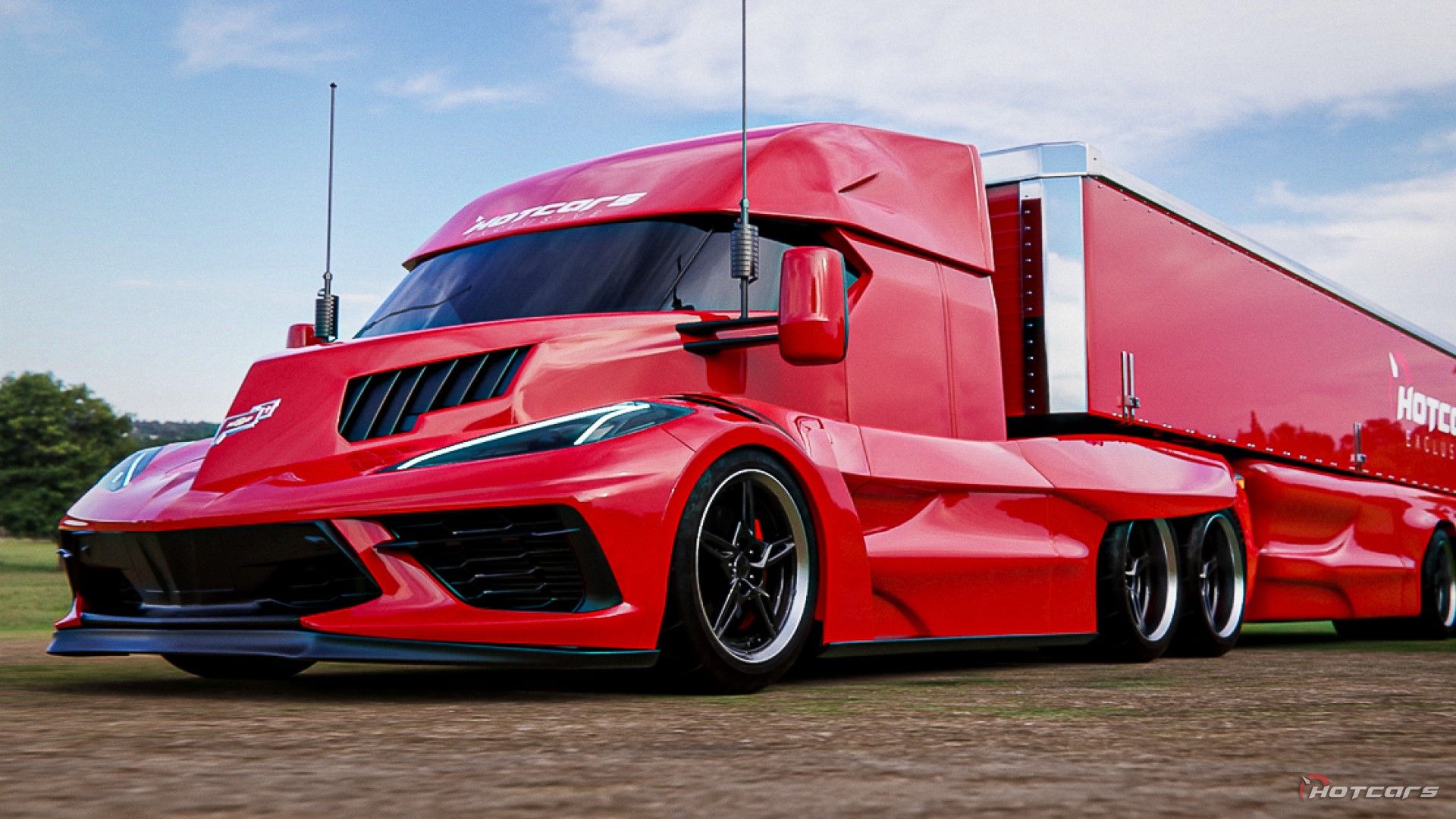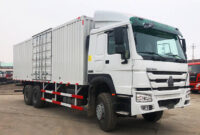Are Truck Cap Fit Chart: Your Ultimate Guide to Perfect Fitment pickup.truckstrend.com
Investing in a truck cap, also known as a truck topper or camper shell, is a significant decision for any pickup truck owner. It transforms your open bed into a secure, weather-protected, and often more organized cargo area. However, the success and satisfaction derived from this investment hinge entirely on one critical factor: fitment. This is where the Truck Cap Fit Chart becomes an indispensable tool, serving as the definitive guide to ensuring your chosen cap marries perfectly with your truck’s unique dimensions and features.
In essence, a Truck Cap Fit Chart is a comprehensive database provided by cap manufacturers that cross-references specific truck makes, models, years, and bed lengths with the corresponding cap models and part numbers designed to fit them precisely. It’s far more than just a list of dimensions; it’s the blueprint for avoiding costly mistakes, ensuring optimal functionality, and achieving a seamless, factory-installed look. Without it, you’re navigating a labyrinth of truck bed variations, potentially leading to a cap that doesn’t seal properly, looks awkward, or worse, is unsafe.
Are Truck Cap Fit Chart: Your Ultimate Guide to Perfect Fitment
This article will delve deep into the world of Truck Cap Fit Charts, explaining their structure, benefits, how to effectively use them, and crucial considerations that go beyond simple measurements.
Understanding the "Fit" – More Than Just Dimensions
Before diving into the chart itself, it’s vital to grasp what "fit" truly entails when it comes to truck caps. It’s a nuanced concept that extends beyond merely matching the length and width of your truck bed. A perfect fit encompasses several critical elements:
- Bed Length: This is the most obvious measurement, typically given in feet (e.g., 5.5 ft, 6.5 ft, 8 ft). However, published bed lengths can sometimes be rounded, making precise measurement crucial.
- Bed Width: Truck beds vary significantly in width, especially between manufacturers and even within different models of the same brand. The cap must match the width of the bed rails.
- Bed Rail Profile: This is often overlooked but incredibly important. Some truck beds have flat, level rails, while others might have slight curves, integrated utility tracks (like Toyota’s Deck Rail System or Nissan’s Utili-track), or factory-installed bed rail caps that alter the profile. The truck cap’s mounting system must accommodate these variations.
- Cab Height and Angle: The rear of your truck’s cab isn’t always perfectly vertical or uniform across models. A well-fitted cap will sit flush with the cab’s roofline for "cab-high" models or rise cleanly above it for "mid-rise" or "high-rise" designs, without awkward gaps or overhangs.
- Tailgate Design: The cap’s rear door or gate must clear your truck’s tailgate and often incorporates a seal that mates with the tailgate’s top edge, ensuring weather protection.
- Make, Model, Year, and Trim Level: These identifiers are paramount. A 2015 Ford F-150 SuperCrew with a 5.5-foot bed is very different from a 2020 F-150 SuperCab with a 6.5-foot bed, or even a 2015 F-150 King Ranch vs. an XLT, which might have different factory bed liners or rail caps.

The Anatomy of a Truck Cap Fit Chart
A typical Truck Cap Fit Chart is a highly organized table, often found on the manufacturer’s official website or at authorized dealerships. While the exact layout may vary, common columns include:

- Truck Manufacturer: (e.g., Ford, Chevrolet, Ram, Toyota, Nissan, GMC)
- Truck Model: (e.g., F-150, Silverado, Ram 1500, Tacoma, Titan, Sierra)
- Truck Year(s): (e.g., 2015-2020, 2021-Current) – Important for generational changes.
- Cab Style: (e.g., Regular Cab, Extended Cab, Crew Cab) – While not directly affecting bed fit, it helps narrow down options.
- Bed Length: (e.g., 5′ 6", 6′ 6", 8′ 0") – Often listed in feet and inches.
- Truck Cap Series/Model: The specific line of caps designed for that truck (e.g., ARE CX Series, Leer 100R, Snugtop Rebel).
- Part Number/SKU: A unique identifier for the cap’s shell, often followed by options codes.
- Notes/Comments: This crucial section provides vital details, such as "Requires specific clamp for utility track," "Not compatible with factory drop-in bed liner," "Fits with or without factory bed rail caps," or "Tailgate gap may vary."

How to Read and Interpret It:
Start by locating your truck’s manufacturer, then its specific model and year range. Once you’ve found the correct row, cross-reference your exact bed length. The chart will then direct you to the compatible cap series and any important notes. Always read the notes carefully, as they often contain exceptions or requirements that can significantly impact the fit.
Why a Fit Chart is Indispensable
Relying on a Truck Cap Fit Chart isn’t just a suggestion; it’s a necessity for several compelling reasons:
- Preventing Costly Mistakes: A mis-ordered cap means potential restocking fees, expensive return shipping, and the frustrating wait for the correct one. Caps are large, bulky items, making returns a significant hassle.
- Ensuring Safety and Security: A properly fitted cap seals against the elements, protecting your cargo from rain, snow, and dust. More importantly, it secures firmly to your truck bed, preventing shifting during transit and deterring theft. An ill-fitting cap can vibrate loose or provide easy access for intruders.
- Maximizing Functionality: Correct fit ensures that features like side windows, rear doors, and locks operate smoothly and effectively. It also guarantees compatibility with accessories like roof racks or interior lighting.
- Aesthetics and Resale Value: A cap that perfectly complements your truck’s lines enhances its overall appearance, making it look like an integrated part of the vehicle, not an afterthought. This seamless look can also contribute positively to your truck’s resale value.
- Warranty Compliance: Many manufacturers require professional installation and adherence to fitment guidelines for warranty validity. Using a non-recommended cap or improper installation could void your warranty.
How to Use a Truck Cap Fit Chart: A Step-by-Step Guide
Follow these steps to ensure you select the perfect truck cap for your vehicle:
Step 1: Gather Your Truck’s Information
- Make: (e.g., Ford)
- Model: (e.g., F-150)
- Year: (e.g., 2023)
- Cab Style: (e.g., SuperCrew, Extended Cab)
- Trim Level: (e.g., Lariat, XLT) – This can sometimes influence factory bed liners or rail caps.
- Crucially, Measure Your Truck Bed: Do NOT rely solely on published specs, as they can sometimes be rounded.
- Measure the inside length of the truck bed along the top edge of the bed rails, from the bulkhead (front of the bed) to the inside edge of the tailgate. Measure both sides and average them if slightly different.
- Measure the inside width of the bed at the front (bulkhead) and the rear (tailgate).
- Note any factory or aftermarket bed liners (over-the-rail or under-the-rail) or utility track systems.
Step 2: Locate the Correct Chart
- Visit the official website of the truck cap manufacturer you are considering (e.g., ARE, Leer, Snugtop, Raider, ATC). Most will have a "Fit Guide" or "Application Chart" section.
- Alternatively, consult an authorized truck cap dealer. They have access to the latest charts and often specialized software.
Step 3: Cross-Reference Your Information
- Find your truck’s manufacturer, model, and year in the chart.
- Match your exact bed length.
- Identify the corresponding truck cap series or model number.
Step 4: Verify Notes and Exceptions
- This is paramount. Read every note associated with your truck’s entry. Does it mention specific bed liner requirements? Does it need special clamps for utility tracks? Are there any known issues with particular trim levels?
Step 5: Consider Cap Style (Cab-High, Mid-Rise, High-Rise)
- While the fit chart primarily covers the bed dimensions, also consider the cap’s height relative to your cab. Cab-high caps offer a sleek, integrated look, while mid-rise and high-rise caps provide more cargo volume. The chart might indicate which styles are available for your truck.
Step 6: Double-Check with a Professional
- Before finalizing your purchase, especially for an expensive item like a truck cap, it’s highly recommended to verify your findings with an authorized dealer. They can often do a physical measurement or use their internal systems to confirm the exact fit. Bringing your truck to them for a final check is the safest bet.
Important Considerations Beyond the Chart
While the fit chart is your primary resource, other factors can influence the final fit and your satisfaction:
- Bed Liners: Over-the-rail bed liners can interfere with the cap’s clamping system and seal. Under-the-rail liners are generally fine. Some cap manufacturers offer specific clamps or require trimming of the liner.
- Utility Tracks/Rails: Trucks like the Toyota Tacoma and Nissan Frontier often come with factory bed rail systems. Caps designed for these trucks will have specific mounting hardware to accommodate these tracks without damaging them.
- Tailgate Design: Some caps have a flush-fitting rear door, while others might have a slight overlap or require a separate tailgate seal for optimal weather protection.
- Aftermarket Accessories: If you have aftermarket bed rail caps, bed extenders, or other modifications, they might affect the cap’s fit. Inform your dealer about any such additions.
- Older Trucks: Finding accurate fit charts for discontinued truck models or very old trucks can be challenging. In such cases, precise manual measurements and potentially custom solutions or used cap considerations become more relevant.
- Used Caps: Fitting a used cap from one truck to another (even if they appear similar) is fraught with challenges. Even minor differences in bed rail profile or tailgate design can lead to leaks, poor aesthetics, and security issues. Always consult the original manufacturer’s chart for both the donor truck and your truck, and be prepared for potential modifications or compromised fit.
Common Challenges and Solutions
- Chart Discrepancies: If you find conflicting information or your truck doesn’t seem to align with the chart, contact the manufacturer’s customer service or a reputable dealer directly for clarification.
- Modified Trucks: For trucks with extensive bed modifications, a standard fit chart might not apply. You might need custom fabrication or a professional installer to assess and adapt a cap.
- No Chart Available (Very Rare): For highly obscure or custom trucks, a fit chart might not exist. In such extreme cases, precise custom measurements and potentially a custom-built cap are the only solutions.
- Bed Liner Interference: If your over-the-rail liner interferes, a dealer might recommend trimming the liner, using specific "J-hook" clamps, or opting for a cap designed to sit over the liner.
- Tailgate Gap: If a small gap exists after installation, weather stripping or a dedicated tailgate seal kit can usually resolve it.
Practical Advice and Actionable Insights
- Measure Thrice, Buy Once: Always personally measure your truck bed’s length and width, even if you know the "official" specs.
- Don’t Guess on Year/Model: Even a single year difference can mean a completely redesigned truck bed.
- Visit a Local Dealer: They possess invaluable expertise, often have display models, and can perform accurate measurements or even temporary fit checks.
- Consider Your Needs: Think about what you’ll primarily use the cap for (e.g., tools, camping, pets) as this will influence the cap style and features, which then feed back into the fitment considerations.
- Account for Accessories: If you plan on adding a roof rack or other accessories, confirm their compatibility with the cap model and that they won’t interfere with the truck’s cab or other elements.
Example Truck Cap Pricing & Fitment Considerations
While the Truck Cap Fit Chart itself doesn’t have a price, the fitment complexity and truck-specific design significantly influence the cost of the cap. Here’s a conceptual table illustrating how different cap types, requiring various levels of fitment precision, fall into general price ranges. Prices are estimated and can vary widely based on brand, features, location, and installation costs.
| Cap Type/Style | Key Fitment Considerations | Estimated Price Range (USD) | Notes |
|---|---|---|---|
| Basic Aluminum Cap | Specific bed length/width. Often simpler rail clamping. | $800 – $1,500 | Functional, lighter duty. Fitment is usually less complex than fiberglass, but still truck-specific. |
| Cab-High Fiberglass | Exact bed length, width, cab height match, bed rail profile. | $1,500 – $3,000 | Most common type. Designed to flow with truck’s cab. Precise fitment is critical for aesthetics and seal. |
| Mid-Rise Fiberglass | Exact bed length, width, bed rail profile. Higher than cab-high. | $2,000 – $3,500 | Offers more interior volume. Fitment focuses on bed dimensions and secure mounting. |
| High-Rise/Commercial | Exact bed length, width. Often requires heavy-duty mounting. | $2,500 – $5,000+ | Max cargo volume. Fitment must ensure structural integrity for heavier loads or specialized equipment. |
| Custom/Specialty | Highly specific dimensions, custom features, unique truck models. | $4,000+ | For unique trucks or bespoke requirements. Fitment is often a custom fabrication process. |
| Used Cap | High variability. May require modifications, sealing, or new clamps. | $300 – $1,500 | Caution: Fitment is the biggest gamble. Often requires compromise or additional costs for adaptation/sealing. Consult original charts for both trucks. |
Note: These prices are for the cap shell only and typically do not include installation, accessories (like roof racks, interior lights, carpeted headliners), or shipping fees, which can add hundreds of dollars.
Frequently Asked Questions (FAQ)
Q1: Can I use a cap from a different make/model truck on my truck?
A1: It is highly discouraged and often leads to a poor fit, compromised weather sealing, security issues, and an unappealing look. Even if dimensions seem close, subtle differences in bed rail profiles, cab contours, and tailgate designs will prevent a proper fit.
Q2: How do I measure my truck bed accurately for a cap?
A2: Measure the inside length along the top of the bed rails from the bulkhead (front of the bed) to the inside edge of the closed tailgate. Measure both sides and take an average. Also, measure the inside width at the front and rear of the bed. Always use a reliable tape measure.
Q3: What if my truck isn’t on the fit chart?
A3: If your truck is a very new model, the chart might not be updated yet. Contact the cap manufacturer or an authorized dealer directly. For very old or highly customized trucks, a standard chart might not exist, requiring precise custom measurements and potentially a custom-built solution.
Q4: Do bed liners affect truck cap fit?
A4: Yes, significantly. Over-the-rail bed liners can interfere with the cap’s clamping system and the weather seal. Under-the-rail liners are generally fine. Always inform your dealer if you have a bed liner, as specific clamps or minor modifications might be needed.
Q5: What’s the difference between cab-high and mid-rise caps in terms of fit?
A5: Both must fit the bed length and width precisely. The difference is in height relative to the truck’s cab. A cab-high cap is designed to match the height of your truck’s cab for a sleek, factory look. A mid-rise cap is taller, offering more interior cargo volume, but still fits the same bed dimensions.
Q6: Is it better to buy a new or used cap, considering fit?
A6: For the best fit, security, and weather protection, a new cap designed specifically for your truck is always the superior choice. While a used cap might save money upfront, the risk of poor fit, leaks, and potential need for costly modifications or seals makes it a gamble. If considering used, verify the cap’s original application against your truck’s fit chart.
Conclusion
The Truck Cap Fit Chart is not just a reference document; it’s the cornerstone of a successful truck cap purchase. By meticulously understanding its purpose, carefully gathering your truck’s information, and diligently cross-referencing with the chart, you empower yourself to make an informed decision. While the process requires attention to detail, the reward is a perfectly fitted, secure, and aesthetically pleasing truck cap that enhances your vehicle’s utility and appearance for years to come. Remember, accuracy and patience are your best allies in this process, ensuring your investment truly pays off.



